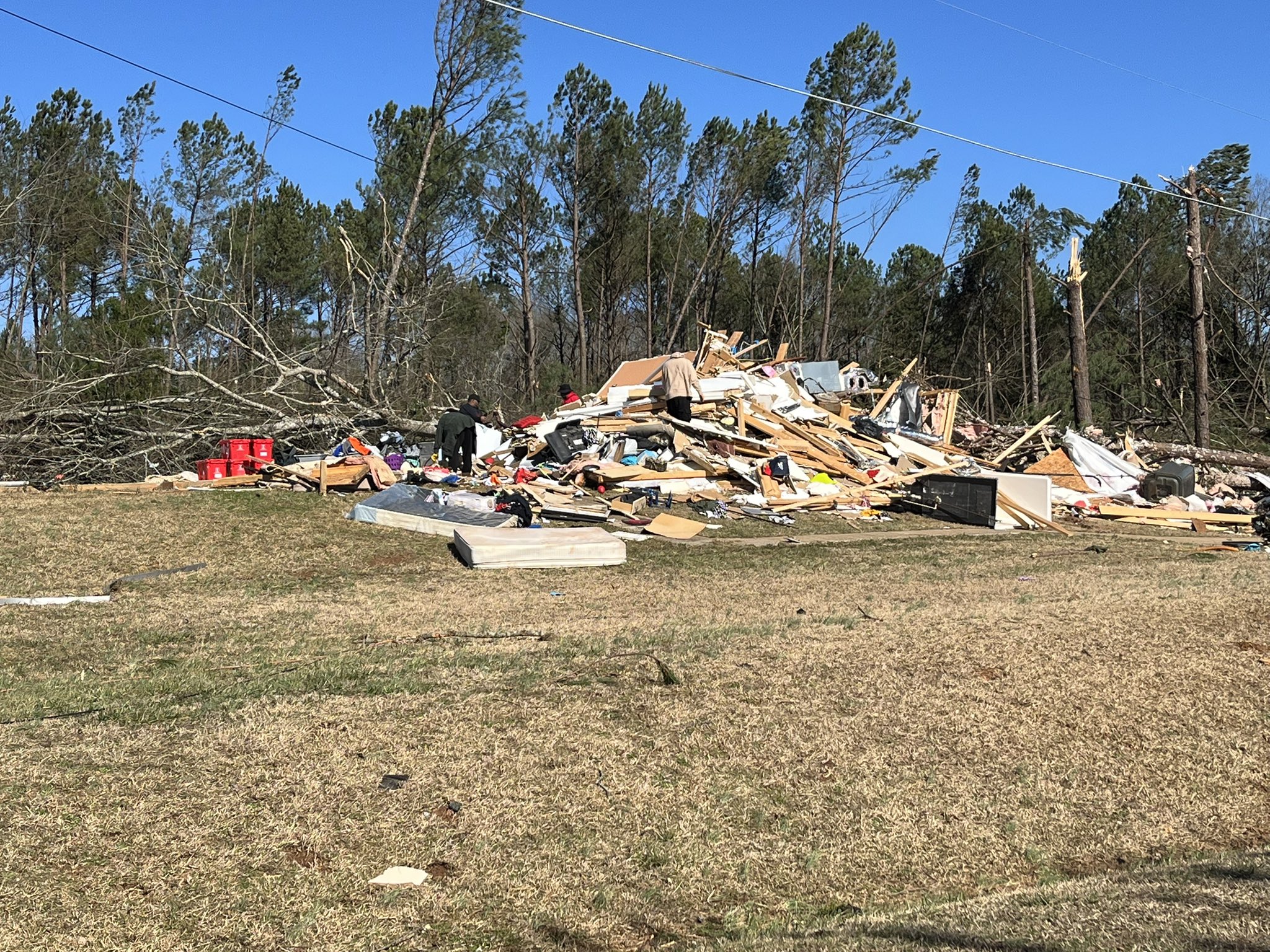Deadly winter tornadoes prompt new CDP Tornado Recovery Fund

I grew up fearing tornadoes. I lived in Oklahoma, the buckle of the tornado belt. Watching the skies as they darkened and sometimes turned green was simply what we did. This native Oklahoman honed her disaster skills on tornadoes.
And, though you don’t hear about tornadoes in the winter as often as you might in the spring or fall, winter tornadoes are not a new phenomenon. I distinctly remember a December tornado flying over me in Tulsa when I was a young girl. We were lucky then, though. That storm delayed my school bus ride home but caused very little damage.
Recently, we’ve seen a lot of winter tornadoes. During December 2021, storms raged across Tennessee and Kentucky. Communities were devastated and are still recovering more than a year later.
On Jan. 12, 2023, Alabama and Georgia experienced deadly tornadoes and straight-line winds that caused catastrophic damage to many communities. You can read our disaster profile on these storms to learn more about what caused them and why they were so dangerous.
Tornadoes require three things to form: 1) strong wind shear – something we frequently see in winter as weather systems make their way across the United States; 2) warm temperatures – not something you expect during the winter months, but not uncommon in southern states (and with climate change, we’re seeing more warm temperatures in the winter months, in southern states and beyond), and 3) humidity – if you live along the Gulf Coast, you know it’s humid much of the time.
On Monday, Jan. 16, Iowa saw two tornadoes touch down. These twisters were small and not in highly populated areas, so the damage was minimal. But Iowa? The state is not known to have warm temperatures and high humidity in January. That is what seems different these days.
So far this year, we’ve experienced nearly 100 tornadic storms across many states. And some, like those in Alabama and Georgia, have been deadly. Once again, I was glued to my TV earlier this month, watching a tornado-warned storm approaching my house, which is now in Texas. It never touched down, and there was only minor damage. I wondered, though, are these winter storms typical? When is tornado season these days? And where exactly is tornado alley now? It seems a lot larger than an alley in 2023. And the season seems constant, meaning there is no longer a true “tornado season.”
With all of these facts facing us, CDP is launching our Tornado Recovery Fund. At CDP, we know the devastation these storms can cause, and we have regularly supported recovery from tornadoes since our founding. We know that it is common for destruction to happen in small towns or rural areas that don’t have the resources or infrastructure to recover quickly and equitably. We know that marginalized communities are always the most likely to be affected and have the slightest opportunity to recover. And we know that we must support them.
Join us in focused support of tornado-affected communities across the United States. A gift to the CDP Tornado Recovery Fund will help communities like Selma, Alabama and Griffin, Georgia, and any number of communities across the country that will experience tornadic storms still to come. It’s only January, and we know there will be more.
Also, join us next Wednesday, Jan. 25 for our webinar, “Selma and beyond: Responding to tornadoes in Alabama and Georgia.” I’ll be joined by several other experts to discuss the urgent and long-term needs of communities affected by the Jan. 12 tornado outbreak. Learn more and register here.
